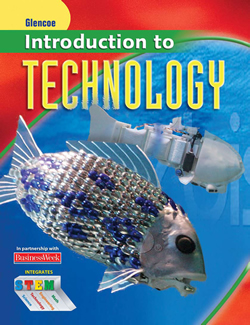
Introduction to TechnologyUnit 7: Transportation TechnologiesBusinessWeek Tech News(Chapter 22, p. 472) Read the complete article and answer the question from your textbook: Critical Thinking What are some other ways urban areas can improve their environmental footprint? Moving More People, Making Less Impact The greening of the world's mass transit systems calls for innovative thinking, public regulation—and private funding The venerable yellow cab, once a symbol of cosmopolitan efficiency, has come to represent all that is wrong with transit in congested urban centers like New York City. “We can't afford to have 13,000 gas guzzlers,” says Deborah Marton, executive director of the Design Trust for Public Space, a nonprofit taking strides to bring sustainability and accessibility to taxi design in New York and abroad (see BusinessWeek.com, 10/28/05, “A Taxi for the Next Hundred Years”). The Design Trust's Taxi '07 exhibit at this year's New York International Auto Show gave visitors the chance to see taxis they might hail in the not-too-distant future. Participating companies displayed taxi prototypes addressing at least 5 out of 10 design challenges, such as incorporating hybrid or alternate-fuel engines, wheelchair accessibility, a driver partition, a skylight, and integral child seats. While some entrants put a new spin on an existing vehicle—such as Chrysler's PT Cruiser with a lithium battery and Kia's Rondo with enhanced safety lighting—lesser-known Troy (Mich.)-based Vehicle Production Group fielded its Standard Taxi, a boxy vehicle measuring more than six feet in height. It allows for wheelchair access, seats up to four passengers, and has a smaller footprint than most cabs along with an engine that gets as much as 20 miles per gallon. The cab will cost about $25,000, nearly the same as the old standby for cabs, Ford's Crown Victoria. The Standard Taxi goes into production in 2008, and the company expects to sell as many as 5,000 in the U.S. and in Canada in the first year alone. Sweeping Past Tollbooths Meanwhile, rising congestion and pollution are sparking innovative designs for buses, trains —and even toll roads. The Illinois State Toll Highway Authority in 2005 launched a $5.3 billion congestion-relief program that aims to reduce the average commute time by 20 minutes before 2015. In addition to a new highway infrastructure, the plan calls for statewide automated tolling—lanes where vehicles with prepaid electronic cards can pass through toll plazas at highway speeds. In the past two years, Kansas City (Mo.)-based urban transportation and architecture firm HNTB automated 20 toll plazas in the state at a cost of $400 million. In addition to easing traffic flow, automatic tolling could lower vehicle emissions. “Any time cars are delayed at a tollbooth, the emissions run up,” says Jack Finn, HNTB's national director of toll services. Some city planners are already looking ahead to a day when transportation is not so dependent on cars. About 21 years ago, the California Department of Transportation and the University of California founded Partners for Advanced Transit & Highways (PATH), a research group focused on creating a high-tech, automated transit system that would reduce congestion and pollution—and increase safety. During the height of the group's funding, in the mid-1990s, such a system wasn't too far away from implementation. But severe cuts in funding have rendered this a more distant goal, says Deputy Director Steven Shladover. Now, Shladover hopes to see a surge of interest from the private sector. “In a field like this, you need a combination of public and private [funding]; they need to work together,” he says. Ultra Futuristic Should resources become available, one model PATH may consider is the ULTra—or urban light transport—system, produced by Cardiff (Wales)-based Advanced Transport Systems. Involving futuristic, automated vehicles, carrying up to four passengers, it was first tested in 2002 and will see its first commercial application at London's Heathrow Airport in 2008. While British government agencies invested heavily in the ULTra's development, airport company BAA will invest as much as $14.9 million in Advanced Transport Systems to see the Heathrow project through. The grandest-scale experiment in automated mass transit will launch in 2010, when Dubai cuts the ribbon on its automated metro. Plans for the 200-mile fully automated rail system come with a $4.2 billion price tag. By Douglas MacMillan May 14, 2007 |  |
















